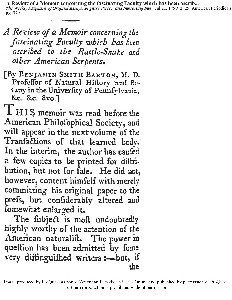 ―370― ―370―
A Review of a Memoir concerning the
fascinating Faculty which has been
ascribed to the Rattle-Snake and
other American Serpents.
[By Benjamin Smith Barton, M. D.
Professor of Natural History and Bo-
tany in the University of Pennsylvania,
&c. &c. 8vo.]
THIS memoir was read before the
American Philosophical Society, and
will appear in the next volume of the
Transactions of that learned body.
In the interim, the author has caused
a few copies to be printed for distri-
bution, but not for sale. He did not,
however, content himself with merely
committing his original paper to the
press, but considerably altered and
somewhat enlarged it.
The subject is most undoubtedly
highly worthy of the attention of the
American naturalist. The power in
question has been admitted by some
very distinguished writers:—but, if
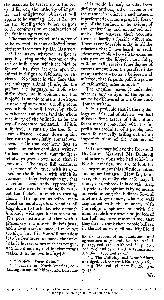 ―371― ―371―
the accounts be traced up to the ori-
ginal sources, the authority of impar-
tial and enlightened observers will
appear to be wanting. Let us see how
far the investigation before us goes
to the confirmation or confutation of
the fascinating faculty.
The manner in which it is supposed
to be exerted, is thus collected from
different statements by Dr. Barton.
“The snake, whatever its species
may be, lying at the bottom of the
tree or bush upon which the bird or
squirrel sits, fixes its eyes upon the
animal it designs to fascinate, or en-
chant. No sooner is this done than
the unhappy animal (I use, for the
present, the language of those who
differ from me in opinion, on this
subject) is unable to make its escape.
It now begins to utter a most piteous
cry, which is well known by those
who hear it, and understand the whole
machinery of the business, to be the
cry of a creature enchanted. If it is
a squirrel, it runs up the tree for a
short distance, comes down again,
then runs up, and, lastly, comes lower
down. 'On that occasion,' says an
honest but rather credulous writer,*
'it has been observed, that the squir-
rel always goes down more than it
goes up. The snake still continues
at the root of the tree, with its eyes
fixed on the squirrel, with which its
attention is so entirely taken up, that
a person accidentally approaching,
may make a considerable noise, with-
out the snake's so much as turning
about. The squirrel as before men-
tioned comes always lower, and at last
leaps down to the snake, whose mouth
is already wide open for its reception.
The poor little animal then with a
piteous cry runs into the snake's jaws,
and is swallowed at once, if it be not
too big; but if its size will not allow
it to be swallowed at once, the snake
licks it several times with its tongue,
and smoothens it, and by that means
makes it fit for swallowing†."
* “Professor Peter Kalm.”
† “Travels into North America; con-
taining its natural history, and a circum-
“It would be easy to cite, from
different authors, other accounts of
the manner in which the enchantment
is performed; or, more properly speak-
ing, of the conduct, or behaviour, of
the enchanting and enchanted ani-
mals. But between these accounts
there is hardly a specific difference.
There is considerable unity in all the
relations that I have heard, or read.
However, those who wish to examine
this part of the subject more fully,
will, at least, receive some degree of
entertainment from the perusal of the
many authors who have believed and
asserted, that serpents possess a power
of fascinating other animals.”
The enquirer leaves it undecided
whether any vestiges of the opinion
are to be discovered in the Greek and
Roman writers.
“It is probable that in the mytho-
logy of Asia and of Africa, we shall
discover some traces of this notion,
so intimately connected with the su-
perstitious credulity of a people, and
even so naturally arising out of an
imperfect view of the manners of
serpents.
“If we may believe the Reverend
Dr. Cotton Mather,‡ Mr. Dudley,||
and other persons who had resided in
North America, we are to look for
the beginning of this ridiculous notion
among our Indians. How far, how-
ever, this is really the case may, I
think, be doubted. It is certain that,
at present, the opinion is by no means
universal among the Indians. Several
intelligent gentlemen, who are well
acquainted with the manners, with
the religious opinions, and with the
innumerable superstitious prejudices of
the Indians, have informed me, that
they do not think these people believe
in the notion in question. My friend
stantial account of its plantations and
agriculture in general, &c. &c. vol. i.
p. 317, and 318. Also vol. ii. p. 207,
208, 209, and 210. English Translation.
London: 1770 and 1771.”
‡ “The Philosophical Transactions,
abridged, vol. v. part ii. No. 339. p. 162.”
|| “Ibid. vol. vi. part iii. No. 376.
p. 45.”
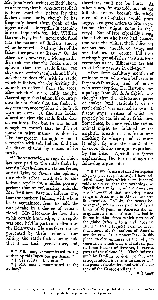 ―372― ―372―
Mr. John Heckewelder, of Bethlehem,
writes to me, that he does not recollect
to have heard the Indians say that
snakes charm birds, though he has
frequently heard them speak of the
ingenuity of these reptiles in catching
birds and squirrels, &c. Mr. William
Bartram says, that he never understood
that the nations of Indians among
whom he travelled had any idea of the
fascinating power of snakes.* On the
other hand, however, a Mohegan In-
dian told me that the Indians are of
opinion that the rattle-snake can
charm, or bewitch, squirrels and birds,
and that it does this with its rattle,
which it shakes, thereby inviting the
animals to descend from the trees,
after which they are easily caught.
According to this Indian, his country-
men do not think that the snake, in
any manner, accomplishes the business
with its eyes. A Choktah Indian
assured me that the rattle-snake does
charm birds, &c. but he was honest
enough to confess that he did not
know in what manner it does it.
The interpreter, through whom I
conversed with this Indian, said that
the snake charms by means of its
rattle.
“The veneration, or regard, which
has been paid to the rattle-snake by
certain North-American tribes seems,
at first sight, to favour the opinion,
that these tribes attributed to this
hideous reptile some hidden power,†
perhaps that of fascinating animals.
Mr. William Bartram informs me,
that the southern Indians, with whom
he is acquainted, seem to hold the
rattle-snake in a degree of venera-
tion.‡ Mr. Heckewelder says that,
to his certain knowledge, this reptile
was once held in particular esteem by
the Delawares. He was several times
prevented by these Indians, from
killing the rattle-snake, being told
that it was their grand-father, and,
* “MS. note, communicated to the
author by this ingenious gentleman.”
† “Vis abdita. Lucretius.”
‡ MS. note communicated to the
author.”
therefore, must not be hurt. At
other times, he was told, he must not
kill this snake, because the whole
race of rattle-snakes would grow
angry, and give orders to bite every
Indian that might come in their
way.|| But, of late, especially among
those Indians who have had connec-
tion with the whites, these ridiculous
notions have mouldered away, and
our Indians, at present, kill their
rattling “grand-father” with as little
ceremony as the Eskemaux are said
to kill their parents in old-age.”
After some desultory mention of
eminent men who were believers in
serpent-fascination, and of others
who were sceptics, Dr. Barton quotes
a passage from M. de la Cépède, who
thought that the deleterious power
of snakes (and particularly of the
rattle-snake) was exerted in two dif-
ferent ways, neither of which can
properly be considered as fascination.
Sometimes, he conceived, the victim-
animal might be disabled by the
mephitic breath of the snake from
effecting its escape; and at others
it might fly into the mouth of its
devourer during the agonies produced
by the bite. Against the former
explanation, Dr. Barton alleges the
following arguments:
|| “In my Historical and Philosophical
Enquiry (not yet published), I have col-
lected many facts which seem incontes-
tably to prove, that the mythology, or
superstitious religion, of the Americans
is a fragment of that mythology whose
range in Asia, and in Africa, has been
so extensive. Possibly, the veneration,
or regard, which was paid to different
kinds of serpents in America did not
originate in this continent, but had its
source in Asia, from which portion of
the globe (after a long and laborious
attention to the subject) I cannot doubt,
that almost all the nations of America
are derived. It is unnecessary, in this
place, to cite instances of the religious
veneration which was, and still is, paid
to some species of serpents, in various
parts of the old-world. These instances
must be familiar to every person, who
is acquainted with the historians or with
the poets of antiquity, and with the his-
tory of the Gentoo-Indians.”
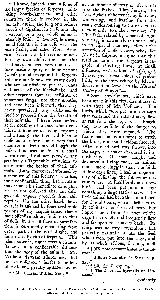 ―373― ―373―
“I know, indeed, that in some of
the larger species of serpents, inha-
biting South-America, and other
countries, there is evolved in the
stomach, during the long and tedious
process of digestion in these animals,
a vapour, or a gas, whose odour is
intensely fetid. I have not, however,
found that this is the case with the
rattle-snake, and other North-Ame-
rican serpents, that I have examined.
But my own observations on this
head have not been very minute. I
have made enquiry of some persons
(whose prejudices against the serpent-
tribe are not so powerful as my own),
who are not afraid to put the heads
and necks of the black-snake, and
other serpents that are destitute of
venomous fangs, into their mouths,
and have been informed, that they
never perceived any disagreeable
smell to proceed from the breath of
these animals. I have been present
at the opening of a box which con-
tained a number of living serpents;
and although the box had been so
close as to admit but a very small
quantity of fresh air, although the
observation was made in a small
warm room, I did not perceive any
peculiarly disagreeable effuvium to
arise from the bodies of these ani-
mals. I am, moreover, informed by
a member of this society,* who has,
for a considerable time, had a rattle-
snake under his immediate care, that
he has not observed that any disa-
greeable vapour proceeds from this
reptile. On the other hand, how-
ever, it is asserted by some creditable
persons of my acquaintance, that a
most offensive odour, similar to that
of flesh, in the last stage of putrefac-
tion, is continually emanating from
every part of the rattle-snake, and
some other species of serpents. This
odour extends, under certain circum-
stances, to a considerable distance
from the body of the animal. Mr.
William Bartram assures me, that
he has observed “horses to be sen-
sible of, and greatly agitated by, it,
*“Mr. Charles Willson Peale.”
at the distance of forty or fifty yards
from the snake. They showed,” he
says, “their abhorrence, by snorting,
winnowing, and starting from the
road, endeavouring to throw their ri-
ders, in order to make their escape.Ӡ
This fact, related by a man of rigid
veracity, is extremely curious; and,
in an especial manner, deserves the
attention of those writers, who, like
M. de la Cépède, imagine that this
fetid emanation from serpents is ca-
pable of affecting birds, at small
distances, with a kind of asphyxy.‡
It even gives some colour of proba-
bility to the story related by Metro-
dorus, and preserved in the Natural
History of Pliny.§ “—
“Some experiments, which have
been made in this city, do not accord
with those of Mr. Vosmaër. The
birds, which were put into the cage
that contained the rattle-snake, flew
or ran from the reptile, as though
they were sensible of the danger to
which they were exposed. The
snake made many attempts to catch
the birds, but could seldom succeed.
When a dead bird was thrown into
the cage, the snake devoured it im-
mediately. He soon caught and
devoured a living mole, an animal
much more sluggish than the bird.
A few days since, I had an opportu-
nity of observing the following cir-
cumstance. A small bird, our snow-
bird.|| had been put into a cage
containing a large rattle-snake. The
little animal had been thus imprisoned
for several hours, when I first saw it.
It exhibited no signs of fear, but
hopped about from the floor of the
cage to its roost, and frequently flew
and sat upon the snake's back. Its
chirp was no ways tremulous; but
perfectly natural: it ate the seed
which were put into the cage, and
by its whole actions, I think, most
† “MS. note communicated to the au-
thor.”
‡ “Histoire Naturelle des Serpens, p.
355.”
§ “Lib. xxviii. cap. 14.”
|| “The Emberiza hyemalis of Lin-
næus.”
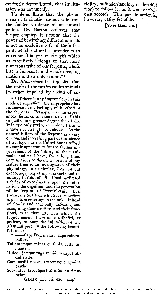 ―374― ―374―
evidently demonstrated, that its situ-
ation was not uneasy.”
To demonstrate that the pheno-
mena of fascination cannot arise from
the sudden virulence of an animal
poison, Dr. Barton observes that
“upon enquiry, it is found that the
power of bewitching different animals
is not an exclusive gift of those ser-
pents which nature has provided with
envenomed fangs: it is a gift which
as extensively belongs to that more
numerous tribe of our serpents, whose
bite is innocent, and whose creeping
motion is their only poison.”*
Dr. Blumenbach has supposed that
the noise of the rattles causes animals
(whether impelled by a kind of cu-
“*If there is any impropriety in this
mode of expression, the impropriety has
its source in my feelings, with respect to
the serpents. Perhaps, no man experi-
ences the force and the miseries of this
prejudice in a greater degree than I do.
It is the only prejudice which, I think,
I have not strength to subdue. As the
natural history of the serpents is a very
curious and interesting part of the science
of zoology; as the United States afford
an ample opportunity for the farther im-
provement of the history of these ani-
mals, and as I have, for a long time,
been anxious to devote a portion of my
leisure time to an investigation of their
physiology, in particular, I cannot but
exceedingly regret my weakness and ti-
midity, in this respect. I had meditated
a series of experiments upon the respi-
ration, the digestion, and the generation
of the serpents of Pennsylvania. But,
I want the fortitude which it is necessary
to possess in entering on the task. Instead
of slowly and cautiously dissecting and
examining their structure and their func-
tions, with that attention which the
subject merits, I am more disposed, at
present, to obey the injunction of the
Mantuan poet, in the following beauti-
ful lines:
| | “—Cape saxa manu: cape robora,
pastor, |
| | Tollentemque minas et sibila colla tu-
mentem |
| | Dijice: jamque fuga tumidum caput ab-
didit alte, |
| | Cum medii nexus, extremæque agmina
caudæ |
| | Solvuntur, tardosque trahit sinus ultimus
orbes. |
| | George. Lib. iii. 420—424.” |
riosity, misunderstanding, or dreadful
fear) to follow it, as it were of their
own accord. This puerile notion is,
however, easily set aside.
[To be Continued.]
|
 ―370―
―370―


